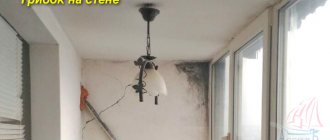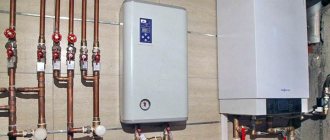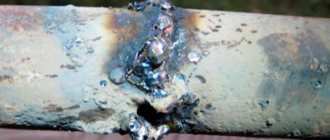Today, thousands of our compatriots living in cities decide to acquire a dacha. And there they spend their free time both in summer and winter. This, of course, can be called the right decision - every person, both a child and an adult, will enjoy being away from a large city, breathing fresh air and enjoying the peace and quiet. But here many people are faced with a very serious question - how to ensure high-quality heating of their dacha in winter?
On days when the temperature drops below -30 degrees Celsius, even in a well-insulated dacha without good heating it is not only uncomfortable, but downright dangerous. Therefore, the issue of heating a country house should be approached as responsibly as possible. Today there are several most common types of heating methods:
- oven,
- water,
- electric.
These species can be further divided into several subspecies. Each has certain pros and cons. Every dacha owner who wants to spend weekends outside the city in the winter should find out about them.
Stove heating
Today, stove heating is the least popular for dachas. But still, it enjoys some popularity, so mentioning it will be very useful.
The main disadvantage of this heating is its difficulty in maintenance. It is necessary to put fuel (coal, peat, wood, coke) into the stove several times a day (depending on the temperature outside and the size of the room) and light the fire. When using coal, you have to remove the ash before each fire, which also takes quite a lot of time.
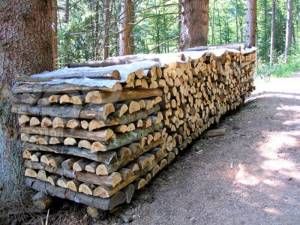
A plus is complete autonomy. You are completely independent of the outside world - you don’t need either electricity or gas. It is enough to stock up on a few cubic meters of firewood or several tons of coal in the summer to be absolutely sure that you can heat your dacha in any frost. The simplicity of the design completely eliminates the risk of breakage, which is also highly valued by prudent owners.
There are two main types of stoves: the Russian stove and the potbelly stove.
The Russian stove is widely known both in our country and far beyond its borders. Huge, massive, it has performed several functions since ancient times. You can cook food in it, you can sleep on its warm surface, healing from chronic joint diseases and, of course, it can be used for heating rooms. It is usually installed in the center of the house, dividing the room into several rooms - kitchen, hall, living room or others, at your discretion.
Due to its large size, it can heat several rooms at the same time. When you heat it up well, you can be sure that the brick from which it is made will retain heat for many hours, protecting you from sudden temperature changes.
The video tells about all the delights of a Russian stove in the house
Alas, there are also disadvantages.
The first of them is large sizes. If you need a truly efficient Russian stove, be prepared to allocate at least 6-8 square meters of free space for it.
It takes quite a long time to heat - after you light the fire, several hours will pass before the cooled bricks warm up and begin to give off heat to the surrounding space. And of course, this solution is only suitable for one-story buildings. Otherwise, you will have to build a furnace similar in size to a steel blast furnace.
Various types of stoves
Not many people can afford to build a large stationary stove in their dacha. The majority of summer residents prefer more compact options.
Potbelly stove
Known since the end of the 19th century, the stove has again begun to be in quite high demand in recent decades. Only this time the summer residents became interested in her. According to many of them, for the rare heating of a small country house, nothing better can be found.
The modern potbelly stove differs from its ancestors mainly in appearance. Its structure has remained virtually unchanged. It consists of a firebox (the size may vary), a vent and a chimney. Some models have a flat surface on top on which you can heat the kettle or cook some simple food. The material can be steel (cheaper options) and cast iron.
The advantages of this heating source:
- compactness, which is important for small country houses;
- quick heating of the room - for summer residents who rarely visit during the cold season of the year, this is one of the most important criteria when choosing a heating device;
- relatively low price;
- ease of operation;
- the ability to use not only firewood as fuel, but also wood chips, wood waste, branches, etc.
The potbelly stove also has disadvantages:
- as much as you heat, you warm up as much: the body of the potbelly stove heats up quickly, and cools down just as quickly;
- some models have a small firebox, so the size of the logs should not exceed 20 cm;
- it cannot be left unattended, and the reason is not only that you need to constantly add firewood, but also safety: a hot body can cause a fire;
- the stove gets very hot, so it needs to be located at a considerable distance from walls and any flammable objects, which is not very convenient in small rooms; for safe operation, the potbelly stove must be installed on a foundation (legs) or thermally insulated with flame and analogues from the nearest walls and floor;
- For combustion, the stove uses oxygen from the room, “taking” it from people. For this reason, in order to avoid oxygen starvation, ventilation is indispensable;
- Frequent chimney cleaning will also not be to the liking of many summer residents.
Stove Buleryan
At the end of the last century, a furnace was invented, which is still considered the best in terms of efficiency and productivity. It combines the operating principles of a potbelly stove and a convector. Like a potbelly stove, the Buleryan stove has a metal body, the base of which is a firebox for wood. Metal pipes are soldered into the structure. Cold air enters the bottom of each pipe. Circling around the combustion chamber, the cold air heats up and comes out of the top of the pipes already hot (the operating principle of a convector is used). Thanks to it, the room is heated.
Positive aspects of the Buleryan stove:
- the room warms up in a short period of time;
- low fuel consumption: one load of firewood is enough for 12 hours, because the wood in the stove does not burn, but smolderes slowly (it is known that smoldering wood provides more heat than actively burning wood);
- the stove does not heat up, so a separate foundation for it is not needed.
Disadvantages of the Buleryan stove:
- You need to use only completely dried firewood for the stove, otherwise the heat transfer of the fuel will be much lower;
- the oven becomes very clogged, so it has to be cleaned frequently; The reason for the appearance of a large amount of soot on the walls of pipes can also be wet firewood;
- To maintain a constant temperature in the room, you need to frequently adjust the position of the damper - this is unlikely to happen the first time. It takes time to learn how to operate the Buleryan stove;
- due to incomplete combustion of wood, smoke is released into the room; to avoid this and improve draft, the chimney should rise 3-5 m above the stove.
Stove-fireplace
A fireplace stove can be an excellent option for heating a country house in winter. This equipment combines the functions of a fireplace and stove. From the first it has a firebox, through which you can admire the bright burning flame. From the stove - heat emanating from the walls and warming the entire room quite evenly.
Fireplace stoves can be either stationary, made of brick and placed on a foundation, or more modern, made of cast iron or steel. They do not require a special foundation - a platform made of fireproof material is enough, they are easy to install and easier to dismantle in case of moving. Many models also have a hob where you can cook.
In addition to those listed, fireplace stoves have other advantages:
- rapid heating of the room;
- ease of installation of equipment when it comes to metal structures;
- most people receive aesthetic pleasure from the sight of burning wood and its smell;
- many modern models serve as interior decoration.
The disadvantages include the following:
- many models have a shallow firebox, which requires the preparation of small firewood;
- laying firewood is required several times a day: with intense combustion, the fuel lasts only a few hours;
- heating of the room occurs unevenly: warm air rushes upward, and at the same time it can be quite cold below.
Water heating
If you are interested in how to heat your dacha in winter with greater comfort, then we can recommend using heating boilers. Yes, their installation and installation of related equipment will take more time and effort, as well as money. But you can be sure that all rooms will be warm and cozy, and you will have to put a minimum of effort and time into this.

Water heating system for a country house
Depending on the fuel used, heating boilers are usually divided into several types:
- diesel,
- gas,
- solid fuel.
Diesel boilers remain one of the most common in our country. But, basically, this is a legacy of bygone decades. Today, diesel fuel is very expensive, so only very wealthy people can afford to heat their homes in this way. Otherwise, such boilers do not have serious drawbacks. The only one is the unpleasant, acrid, oily smoke. You have to extend the chimney above the roof level, otherwise soot appears on the walls, which is quite difficult to get rid of, and the constant smell of burning will probably not please any of the inhabitants of the dacha.
An even better solution would be to install the boiler in a small extension 5-15 meters from the house, if the size of the plot allows it.
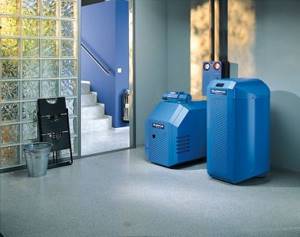
The advantages of diesel boilers are quite numerous. Diesel fuel can be stored in a large tank (several tons) buried on the property, close to the house, in order to be self-sufficient. High energy intensity allows you to burn relatively little fuel to maintain the desired temperature level in the house. The fuel is supplied by itself, thanks to which the temperature in the premises remains practically unchanged all day, and a person does not need to take part in this process.
Gas boilers are becoming increasingly popular these days. Today, most of the country is gasified, and even in small villages people have access to gas. Its cost is significantly lower than the cost of diesel fuel, and their energy intensity is quite comparable.
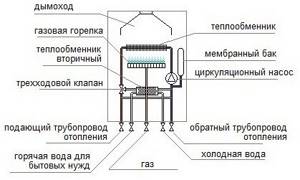
Gas boiler operation diagram
Otherwise, gas is even better than diesel fuel. It does not smoke when burned, which many users like. It is not necessary to have large reserves of gas if there is a connection to a gas pipeline.
The only disadvantage of this type of fuel is the risk of explosion. A tiny leak, which can occur due to improper installation or accidental breakdown, is enough for the owners to get a real bomb at their side. This scares off many potential owners. Although in most cases this danger is reduced to almost zero. To do this, experts recommend installing gas heating boilers not in basements, but in separate buildings. It is very important to ensure good ventilation in this room. Then the possibility of gas accumulation to a dangerous concentration is completely eliminated.
Preparing your cottage for winter: personal experience
It is traditionally believed that a dacha is intended only for summer holidays, and with the arrival of cold weather, the house must be mothballed until the onset of spring. But as the experience of FORUMHOUSE users shows, many continue to go to the dacha in winter, going there for the weekend. And so that a trip of 2-3 days does not turn into a complete headache, you need to prepare in advance for operating the dacha at subzero temperatures.
So, from this article you will learn:
- What features should be taken into account before starting winter operation of the dacha.
- Why does it need to be insulated?
- How to heat in winter.
- How to install a winter water supply system.
Features of winter operation of a dacha
To understand what requirements apply to the winter operation of a summer cottage, you need to understand the concept of “comfortable living conditions.” Electricity, heat and water are the three pillars of a comfortable life in any country cottage. The same applies to the dacha, with the exception that the house will not be used regularly, but intermittently. Those. In winter, the dacha may freeze, and upon arriving at the site, the structure will have to be quickly put into operation.

Therefore, special requirements are placed on the heating and water supply system of the dacha. We have already told you how to prepare the heating system of a country house for the heating season. If a full-fledged heating system is installed at the dacha, filled with water, and not with a non-freezing coolant, then if it freezes, the heating pipes and radiators may break.
There is simply no time to tinker with draining and filling water when you come to the dacha for the weekend. Hence: the dacha heating system should be simple, “frost-resistant” and quickly warm up the premises. The same goes for the water supply system. The water remaining in the pipes, taps, siphons, drain tanks, water purification filters, toilet elbow, when the cottage goes into minus, will freeze and tear the plumbing.
One way out of this situation could be to constantly maintain a positive temperature at the dacha (+ 5-7 °C). Why are infrared heaters or convectors installed (as an option), and the thermostat is set to maintain a minimum temperature.
TolyanychFORUMHOUSE user
I use electric convectors programmed for every day of the week and every hour of the day. On weekdays they are set to + 10 °C, on Friday they are set to + 20 °C.
SteamerForumHouse User
I go to the dacha all year round. While I'm away, the convectors maintain + 5 - + 7°C. thus, the dacha does not freeze. Upon arrival, I light the stove, and before going to bed, I switch the electric convectors to night mode.
This will allow, upon arriving at the dacha, to quickly raise the temperature level in the premises to an acceptable level, rather than having to deal with defrosting the house. But this approach has a drawback - the energy dependence of the system. In the event of a power outage (and this is not uncommon), the dacha will go into the minus in cold weather.
The key to the successful commissioning of a country house in winter is the simplicity of all its systems, designed for a quick start upon arrival on site.
In addition to saving money, this will relieve the dacha owner from worrying about whether everything is fine with electrical equipment constantly connected to the network.
And so that coming to the dacha in winter does not turn into a game of survival, you need to worry about preparing the building for frost in advance.
The need for additional insulation of the cottage
When you hear the word “dacha,” the image of a small wooden house (timber or frame) usually comes to mind. Such a structure is most often built for summer use. Those. If insulation is done, it is done to a minimum. At the same time, it is overlooked that it is more difficult to heat a poorly insulated building than an energy-efficient one, where all heat loss is minimized. Or, in other words, a closed thermal insulation circuit has been erected.
This is a guarantee that we will not heat the street.
Of course, high-quality insulation of a house is an expensive undertaking. At the same time, many novice developers mistakenly believe that it is enough to insulate the walls to the required heat transfer resistance values (this indicator depends on the region). However, heat loss occurs not only through the walls, but also through the foundation, floor, ventilation, windows, doors, and roof.
Therefore, we pay increased attention to these places. We get rid of cracks (which is especially important for old, dried out wooden frames). We provide a vestibule in advance to create a thermal buffer that cuts off the external cold air from the internal heated rooms when the front door opens.
If there is no vestibule, as a temporary measure, you can hang a thick curtain or piece of fabric from inside the house above the front door.
When insulating a country house, do not forget about the price/efficiency balance. Those. the insulation of all components must be balanced. Extra insulation of walls is pointless if it is blowing from the windows, the roof is leaking, and all the heat flies out. How you can insulate a house and the entrance area is described in detail in the articles: choosing modern insulation and how to insulate a steel door with your own hands.
But insulating the dacha is the first step towards its winter operation. The second stage is choosing an option for heating the house.
Winter heating for a summer house
A quick return of heating equipment to the specified temperature regime is the first requirement for a heating system for a country house. This is important because upon arrival at the dacha (for example, on Friday evening), the user will have neither the time, nor the energy, nor the desire to commission the heating system, split wood, or burn the stove for a long time.
Moreover, massive brick stoves (for example, a Russian stove), while accumulating heat well, have great thermal inertia and before they properly warm up the house, a certain amount of time will pass, which simply does not exist on weekends. Therefore, for a trip to the dacha in winter, as mentioned above, we give preference to electric heaters (IR or convectors), metal stoves and their analogues, or Dutch stoves, which is described in detail in the article “Solid fuel heating stoves. Types and characteristics".
Evgeniy2011FORUMHOUSE user
I often go to the dacha in winter for weekends. I want to take a break from the city and breathe clean air. The dacha is summer, made of logs, but insulated. Of course, within a week the building freezes. I heat a room of 25 square meters. m brick heating and cooking stove. A heat exchanger is inserted into the firebox. Heating system with natural circulation of non-freezing coolant, plus 3 radiators installed under the windows.
The following parameters of this cottage heating system are interesting. Depending on the outside air temperature, the heating rate is 3-5°C/hour. A comfortable temperature in the room (up to + 25 °C) is established approximately 12-20 hours after starting the system, until the walls, ceiling and furniture heat up. You have to light the stove 1-2 times every 24 hours.
As you can see, the system has a large time inertia. Therefore, a different approach to a country heating system is interesting.
Alexander_FORMHOUSE user
With a brick stove you won’t get heat right away. At my dacha (a frame house, insulated with 25 cm of glass wool), a heating system is installed based on IR panels, supplemented by a convection stove-fireplace. On weekdays, IR heating, using a programmable thermostat, keeps the temperature in the house at + 5 °C. By Friday evening, the thermostat gives the command to raise the temperature to + 20 °C in the bedroom and + 15 °C in the living room, and upon arrival at the dacha, I light up the fireplace.
As a result of this scheme, at – 15 °C outside, in 1-1.5 hours it is possible to raise the temperature (on the total area of the dacha of 55 sq. m) from + 15 °C to + 27 °C.
You can also assemble a system based on a GSM socket and a 1 kW IR ceiling heater. A few hours before arrival, we send an SMS to the GSM socket, and the house will warm up in advance before arriving at the dacha.
Note that such systems are energy dependent. If there is a power outage, an accident at a substation, if an uninterruptible power supply system is not installed in the house, when we arrive at the dacha, we run the risk of dealing with the consequences of the accident instead of resting.
Therefore, our users are guided by the principle: the simpler the heating system, the better.
WAADFORUMHOUSE user
I have a dacha (frame building 90 sq.m.), where I come in winter. I set up a sauna in the house, in which I placed a 15 kW sauna stove, made of good thick steel with cast iron grates and an extended firebox, loading another 70 kg of stones on top. Moreover, in addition to its direct function, it helps me quickly warm up the house in cold weather.
It happens like this: upon arrival, the oven is lit first. While the snow is being cleared outside and other housework is being done, after 15 minutes the temperature in the sauna is already above zero, because the small room quickly warms up. After 20 minutes you can rest in the room, because... It's already warm inside. Next, WAAD adds more firewood to the stove, accelerating the temperature in the sauna to + 45-50 °C, and turns on forced ventilation, which creates excess pressure in the sauna, forcing air into the room through the pipe.
As a result, when the door is closed, warm air begins to flow into the living room through a special hatch on the other side, and the house quickly warms up.
WAAD
I feel this flow physically like a breath of warm breeze. In 1-1.5 hours my entire first floor warms up. Additionally, I also installed a gas convector and now in winter I warm up the dacha in about 1 hour to a comfortable temperature.
Features of the winter water supply system for the dacha
So, we have heat, but a comfortable stay at the dacha is impossible without a reliable water supply system. We already wrote above that water left in pipes will burst them when they freeze. The water needs to be drained, and this will have to be done every winter visit to the dacha.
To make your task a little easier, you can use this trick. For example, in order not to pump water out of the toilet elbow with a syringe, and then plug the hole with a sponge for washing cars, which will help avoid the spread of unpleasant odors from the septic tank, you can use the “old-fashioned” method. In frosts down to -10°C, pour a concentrated solution of table salt into the knee (salt can be dissolved in hot water).
WAAD
If there is no danger of severe frosts, it is enough to throw 2-3 tablespoons of salt into the toilet water, and such salted water will not freeze.
Go ahead. For water supply you need a water source. This could be a well, an Abyssinian or an ordinary well. We have already talked in detail about all the nuances of the water supply system for a country house. If you choose a well, you can solve the main problem of country water supply - freezing of water in the pipes.
It's done like this. A well-insulated thermos box is erected above the well (expanded polystyrene 10 cm thick can be used as insulation for the walls of the sarcophagus), which allows you to keep the heat of the water column in the well above 0 °C in any frost.
WAAD
I abandoned the idea of installing an automatic pumping station with a hydraulic accumulator. In winter, I visit the dacha frequently, and such a system is difficult to maintain. The water in the well will not freeze due to the thermos box, since the temperature inside it due to the water column is maintained at +5 °C +7 °C even in severe frost.
There is also no need to clear snow from the box lid, because... this layer is a natural insulation. A submersible pump is lowered into the well (WAAD has the most budget-friendly vibration pump installed), which is connected to an insulated pipe brought into the house and laid only 40 cm deep. At first glance, it seems that in this case the pipe will burst, because... it is laid above the freezing depth (about 1.5 – 1.8 m, depending on the region of residence). But the trick of the scheme invented by WAAD is that there is no water left in the pipe. There is nothing to freeze, and the pipe remains intact.
The main trick to prevent water from remaining in the pipes in winter is to leave one of the taps in the house constantly open so that air can pass inside the pipeline.
WAAD
My shower tap is open. When I fill the toilet tank with water or fill a bucket, the water does not rise 2 meters into the shower, but the system always has an air leak.
It was experimentally established that 15 minutes is enough for water (with the taps open) to drain from the water supply system back into the well. Thus, the pipes remain intact even in severe frosts. When the pump starts, the pipe is filled with water from a depth of 8 meters with a temperature of + 5 °C - + 7 °C.
To ensure that the water is completely drained from the system, instead of a check valve in the hose in front of the pump, a metal tube with a diameter of about 12 mm and a length of 60-70 mm is cut into the pipe, and a hole with a diameter of 4 mm is drilled in the side wall.
This point is interesting - because the pipe from the well to the house was buried at a shallow depth, this played into the hands of the user.
WAAD
I noticed that after autumn showers and winter thaws, the water in the well rises to a level of 50-70 cm from the surface. If I had buried the pipe deeper, it would have been filled with water in the freezing zone (according to the law of communicating vessels), even if I let air into it when the pump was turned off. But in my case, this problem resolved itself.
To summarize, let’s say that winter operation of a summer house, although it involves a number of difficulties, but knowing about these features in advance, you can successfully spend a weekend in a summer house even in severe frosts.
By studying topics on FORUMHOUSE, you can learn about all the methods of heating a summer house in winter when visiting on weekends and read about a simple way to supply water to a house in winter from a well.
We also recommend reading articles that tell you how to cheaply heat a country house, and how to connect a country house to the power grid.
And from our videos you will learn how to make frost-resistant communications in your dacha with your own hands, and how to convert a frame dacha into a house for permanent residence.
Biofuel use
Biological fuel is any organic matter that can burn. However, this term has recently come to mean the use of gases released by rotting organic matter.
Principle of operation
Anything that rots with sufficient intensity is suitable as a source of such gas. Typically, manure, food waste, and plant matter are used. All gases formed during the decay process burn well and replace natural gas.
The biofuel heating installation itself consists of units that collect the emitted gas, purify it and feed it into boilers for combustion. And then the operating principle is the same as that of a natural gas boiler.
Minuses
A significant disadvantage of this heating method is the low rotting performance under natural conditions. In order to speed up this process, you need to increase the temperature, which costs energy.
For this reason, it is impossible to use biofuel as the main method of heating a large house, but heating a small house or creating an auxiliary system is quite possible.
Biofuel heating is widely used by farms in countries such as Greece, Spain, and Portugal.
Solid fuel boilers
To heat a house without gas or electricity, you should think about the energy of burning solid fuels:
- brick kilns;
- metal furnaces;
- solid fuel boilers.
There are also fireplaces, but it is difficult to classify them as a home heating system, since they can only be used to heat one room.
Boiler operating conditions
The main models of solid fuel boilers are designed in such a way that the air flow that ensures combustion is directed by a mechanical thermostat with a chain drive. In this case, natural draft of the chimney must be ensured. However, for normal operation of the boiler, a number of conditions must be met:
- Place the pipe so that it is no higher than the incoming pipe.
- Provide the system with free communication with the external environment using an open expansion tank located at the top.
- Create a pipe system with optimal diameters and a minimum number of dead-end branches.
- Equip the boiler with fire safety equipment.
The cost of solid fuel boilers varies in a very wide range - from 20 to 300-400 thousand rubles. It all depends on the design and capacity.
However, despite the price, solid fuel boilers are the best sellers among home heating equipment without gas or electricity.
Features of budget heating of a house without gas
Autonomous heating in a private house without gas is possible in many options. They take into account the individual characteristics of the area, the building itself and the budget allocated for these purposes.
Many options provide an additional option for heating water, which solves the issue of hot water supply in parallel with heating.
The use of equipment whose operation is based on the use of alternative heating sources requires considerable initial investment in the purchase of appropriate equipment.
Attention! Whatever option you choose for heating your home, insulated walls, doors and windows will help to significantly increase its efficiency and significantly reduce heat loss. In this case, a reduction in heat consumption can be achieved by almost half.
Liquid fuel boilers for heating
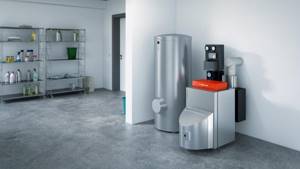
A steel or cast iron boiler is connected to a water heating system. The following is used as fuel for such boilers:
- diesel;
- kerosene;
- processed oils;
- fuel oil.
To install the system, you also need a separate room, since we are talking about bulky and massive equipment.
There are single-circuit and double-circuit boilers. A unit with one circuit heats only the coolant. The dual-circuit model can heat both coolant and hot water. Any water heater (storage or flow-through) can be connected to it. Place the equipment on the wall or floor. Boilers that are placed on the floor are massive and heavy and make a lot of noise when operating. When installing them, additional equipment is used, which requires a lot of space. When operating liquid fuel units, soot and foreign odors always appear, so you must immediately take care of installing ventilation.
If you have a small house, you can install a wall-mounted boiler, which does not cause any hassle during operation.
Solar heating
It is possible to convert solar energy into thermal energy only if the sun shines frequently and for a long time over the roof of your house. Unfortunately, 80% of Russian territories have nothing to do with this. However, even in warm climates you cannot rely solely on solar heating; a backup source is definitely needed.
Principle of operation
Light-absorbing batteries are installed in place “under the sun,” which process solar energy directly into thermal energy and then transfer it to the coolant. There are two types of solar collectors - vacuum and flat. Vacuum ones are considered the most efficient and economical. Using solar energy is an achievement of science.
The advantage of solar heating is the low price of solar collectors. Flat devices can be purchased at prices ranging from 1,500 to 60,000 rubles. Vacuum ones are much more expensive - about 80,000 rubles. However, if you consider that you don’t have to pay for fuel, the price is quite reasonable.
How to light the stove
You can drown anything that burns. The classic option is wood and coal. However, the following sources of thermal energy have also been used in the furnace at all times.
Dung
Dung is completely dried cow dung. It burns well and leaves almost no ash. Horse manure can be used for the same purpose. By the way, there is no smell from such fuel.
Peat, or more precisely, peat briquettes. In terms of calorific value, it is somewhere between wood and coal. Briquettes burn in an already heated firebox. This means that you need to first heat the stove with wood, and then add briquettes.
Advantages - peat is environmentally less toxic than coal.
More precisely, the toxicity of peat smoke can be equated to the toxicity of firewood. Only peat produces more ash and smoke. You can only talk about the benefits of using peat if you have the opportunity to buy it at a low price. In all other cases, it is better to use firewood and coal.
Firewood
Firewood is considered to be the cheapest fuel. However, it is not always possible to agree with this statement. Even if a ton of firewood is cheaper than a ton of coal, you need to compare based on the final result.
Wood burns quickly and is not always hot. To maintain a high temperature in the house you need not just a lot of firewood, you need to put it in the firebox all the time.
Coal
It is best to use coke. Coal burns for a long time, and good coked coal is also hot.
If you use black coal with low ash content and high calorific value, then one measure of coal can provide as much heat as 3-5 such measures of firewood. The only argument against coal is its high ash content.
Coal ash is toxic, so there will be a problem with its disposal.
There are other firewood substitutes. For example, seed husks or corn cobs. Both burn well, but not for long, and without intense heat. However, these types of fuel should not be considered seriously.
Thus, among all types of solid fuels, it is worth choosing firewood and coal. Moreover, precisely in combination. Firewood is good for lighting the stove, and coal is good for long and slow burning.
How to heat a house if there is no gas
If there is no gas in the house, then heating can be built using solid fuel or electricity, or better yet, a combination of both. The more diverse the heating sources, the less likely it is that the system will fail.
For example, the installation of a solid fuel boiler can be supplemented with an electric convector for each room. You can combine a Russian stove on the first floor of the house and infrared heaters on the second floor. However, electric and solid fuel energy sources are not the whole list. So, let's start in order.
Alternative Heating Methods
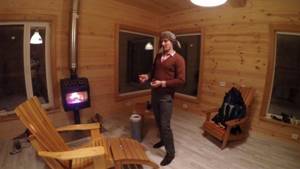
Sometimes at the dacha it is impossible to do without electric heaters. They are:
- infrared;
- fireplace type;
- convector;
- oil;
- ventilation.
Infrared heaters emit soft radiation that effectively warms the room. They are installed on the top of the wall or on the ceiling. Warming up occurs quickly, and there are no difficulties with adjustment. The infrared heater is easy to install and does not take up much space in the room.
Electric fireplaces are beautiful. Sometimes they are difficult to distinguish from real fireplaces or stoves. They have good heat dissipation, and if the electric fireplace has high power, the room will heat up quickly. The disadvantage of electric “ovens” is that they consume a lot of energy, especially when used regularly.
Convector heaters are highly efficient, lightweight, and can be easily installed independently. They gently heat the room and are not as energy-intensive as fireplaces. Oil units take a long time to warm up, but consume little electricity. If you urgently need to warm up the room, their use is inappropriate.
Heat fans quickly heat a room, but they make a lot of noise and absorb moisture from the air. Dry air is harmful when a fan is used for a long time and can harm people with respiratory diseases. Fans need to be monitored by turning them off periodically. For constant heating, it is better not to use heat fans.




